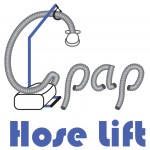Sleep Disordered Breathing (SDB)
- Is a general term for a sleep disorder with apneas1 and hypopneas2. These cause sleep arousals3 that may reduce the quality of sleep and blood oxygen levels
- The most common type is obstructive sleep apnea (OSA)
Obstructive Sleep Apnea (OSA)
- Occurs when the upper airway closes but efforts to breathe continue.
- Upper airway obstruction is usually caused by:
- Lack of muscle tone during sleep
- Excess tissue in the upper airway
- anatomical abnormalities in the upper airway and jaw
- Upper airway obstruction is usually caused by:
- Affects around 20% adults4, making it as widespread as type 2 diabetes or asthma
- Is predominant among:
- Middle aged men
- Obese people
- Smokers
- High alcohol consumers
- Users of muscle relaxing or pain killing drugs
- Is present in patients with the following conditions:
- 80% drug resistant hypertension
- 60% stroke
- 50% congestive heart failure (CHF)
- > 50% type 2 diabetes
Find out more about the link between sleep apnea and type 2 diabetes
Awareness of sleep apnea is low. We believe around 90% of people with OSA remain undiagnosed and untreated.
References
1. Apnea – cessation of airflow for ten seconds or longer
2. Hypopnea – 50% or greater decrease in air flow for ten seconds or longer
3. Sleep arousals – moments when an individual wakes enough to resume breathing but not enough to remember any interruption of sleep
4. Young et al. Am J Respir Crit Care Med. 2002; 165:1217-1239


